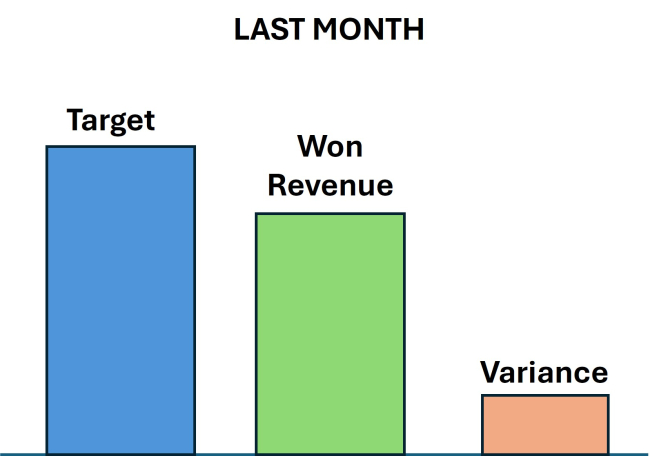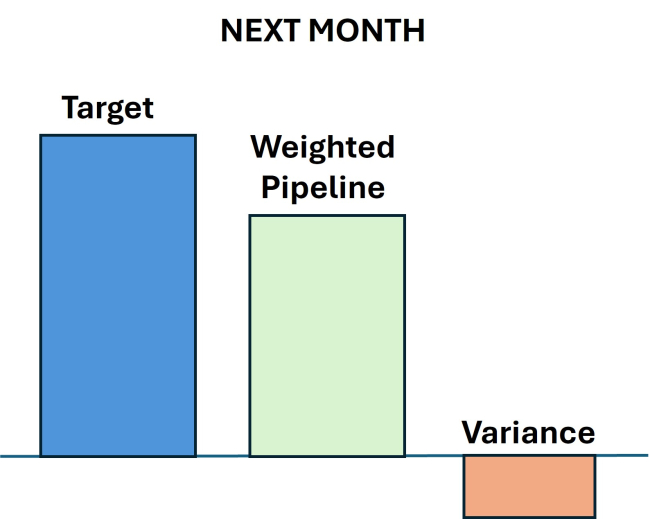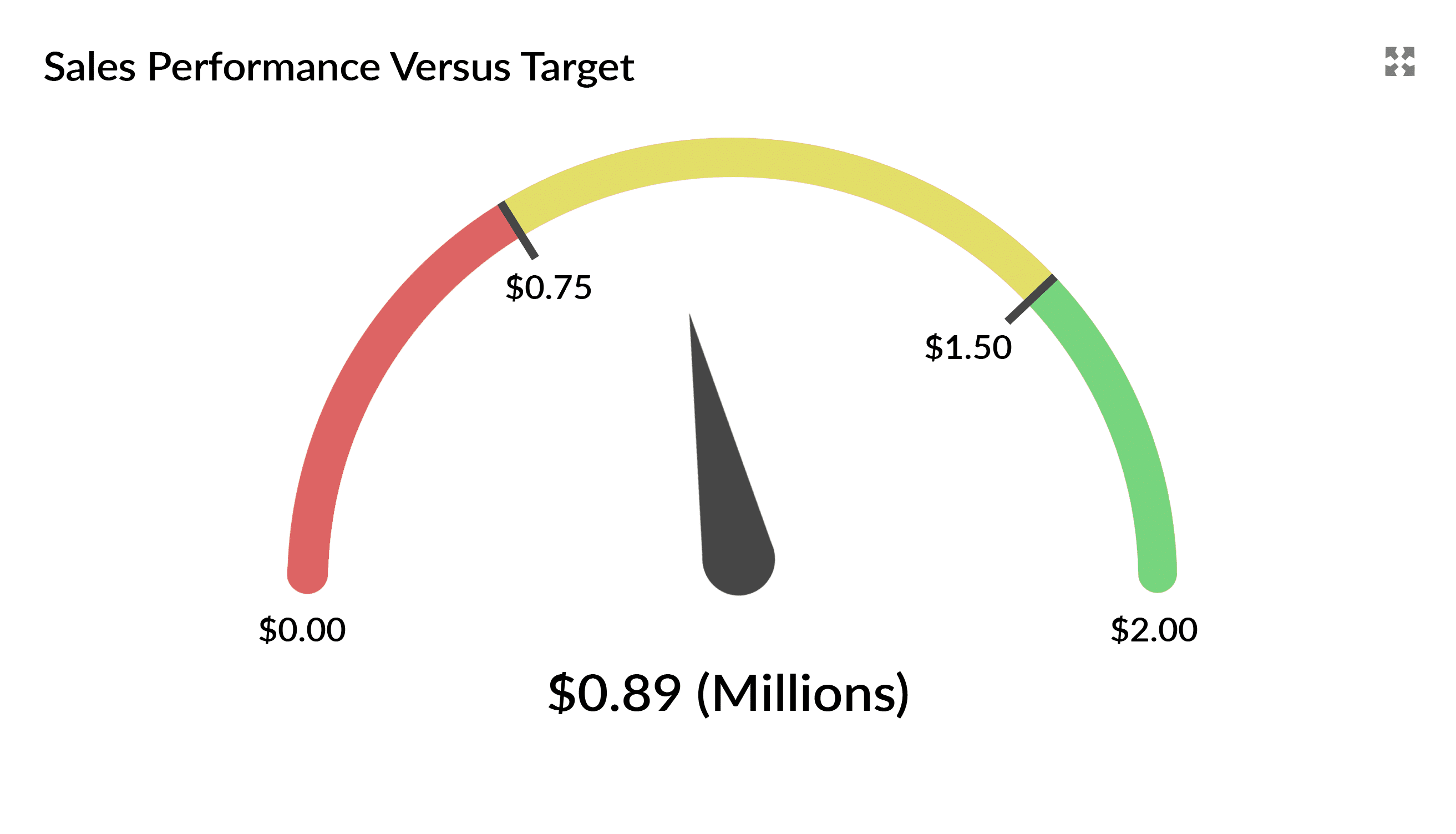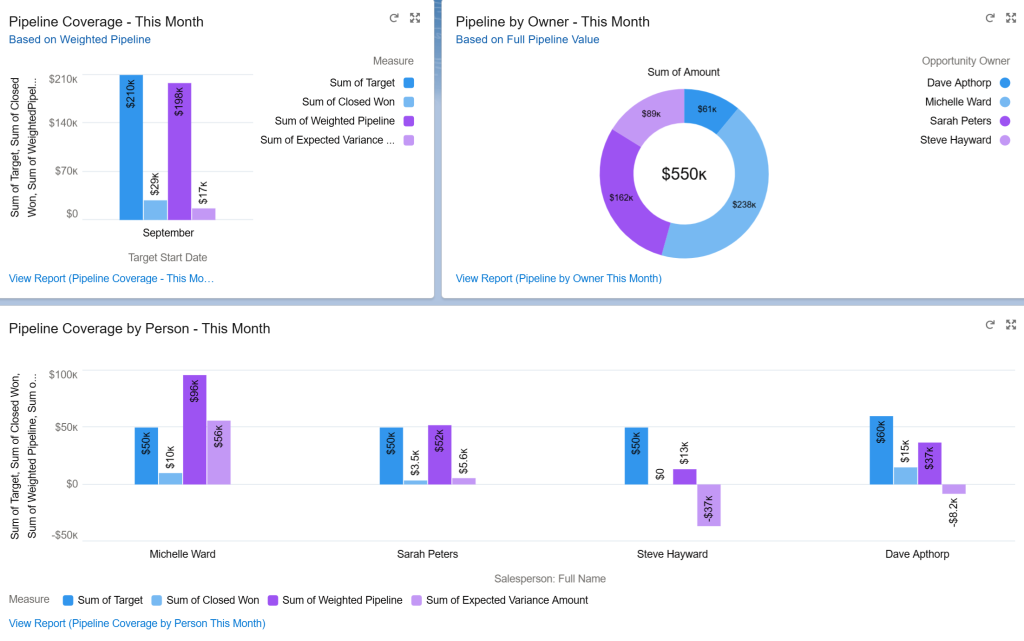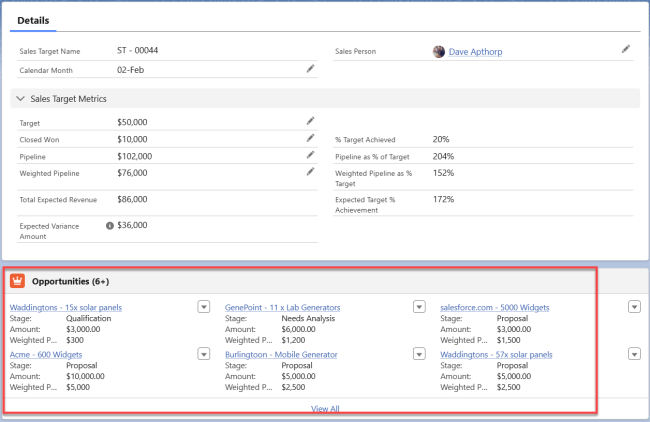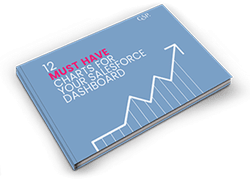4 Ways To Measure Sales Targets In Salesforce
How to Avoid the Frustration of Measuring Sales Targets in Salesforce by Learning How to Track Sales vs Quota.
Last updated December 23, 2025
At A Glance
Tracking sales performance in Salesforce can be frustrating - especially when you realize there’s no “Targets” tab to show how your team is doing against quota. But when understanding where your team is performing against quota is essential, what can you do? This blog breaks down four ways to measure sales and pipeline coverage versus target in Salesforce and helps you determine which is right for your business.
While Salesforce’s built-in tools give you part of the picture, there are limitations when it comes to the insights they offer. That’s where the GSP Target Tracker comes in, making it easy to see exactly how your team is performing.
Many executives become frustrated when attempting to measure sales targets in Salesforce.
Perhaps you're one of them.
Like others, you may even have searched in vain for the Targets tab. (If you're still looking, stop now; it doesn't exist.)
Fortunately, if you want to know how to measure sales versus quota in Salesforce, you're in the right place.
That's because I'll show you how to answer three essential questions when it comes to quota management in Salesforce:
- First, how does historical sales performance compare to the target?
- Second, is the funnel big enough to meet the target this month, next month, or next quarter? In other words, is there enough pipeline coverage to meet current and upcoming targets?
- Third, what is the most effective way to measure sales against salesperson, team, product, territory, and company targets?
Without this information, you're flying blind. Knowing which levers to adjust to hit your sales target is challenging, to say the least.
If you prefer to watch, take a look at this video, where I demonstrate how to set targets using the GSP Target Tracker.
If not, jump to the next section where I go through the Target Tracker in detail.
What is a Sales Target?
A sales target is a revenue or quantity goal over a set period. Companies often define sales targets for salespeople, teams, products, and the entire business. Sales managers track past performance against targets and compare won and pipeline deals with current and future goals.
I mainly use the word 'target' in this article. In your business, you might prefer 'quota' or 'budget.' You may even talk about 'hitting the number'.
I assume they are all the same thing here.
With that, let's talk about time periods.
Sales Targets for Three Periods
In most businesses, we want to measure sales against targets for three different periods: historical, current, and future targets.
1. Historical Sales Targets
Historical sales targets are in the past—for example, those for last month, last quarter, or last year.
We need to know one main thing about historical sales targets: Was the sales revenue higher or lower than the target?
Next, we need to know about current-period targets.
2. Current Sales Targets
These are the targets we are working to achieve right now, for example, this month, this quarter, and this year.
However, we must compare the target with the sum of two metrics.
Firstly, the sales revenue already won. Second, the size of the pipeline that is due to close in the period. More specifically, we likely want to add the won revenue and the weighted pipeline to compare the expected revenue with the target.
In other words, pipeline coverage is crucial in determining whether we will meet our quota in the current period.
3. Future Sales Targets
These targets are in the future—for example, next month, quarter, and year.
With these targets, we have no won revenue because a deal can't close successfully in the future.
In other words, pipeline coverage is king. We must know whether the pipeline is big enough to meet future targets.
Sometimes, people try to take a shortcut by setting a goal of 3x pipeline coverage - they believe that if the funnel is three times bigger than the target, you're likely to hit your number. In The Truth About 3x Pipeline Coverage & What To Do Instead, I explain why this is a high-risk strategy and recommend an alternative approach.
With that in mind, let's examine the four ways to measure sales versus target in Salesforce.
How To Measure Sales Targets In Salesforce
There are four options for tracking performance against sales targets in Salesforce.
- Dashboard gauge
- Forecasts tab
- The Lightning Home Page Performance Chart
- GSP Target Tracker
These options provide salespeople and managers with different levels of information and target tracking experience.
I explain how each one works, its pros and cons, and when each is the best quota management option in Salesforce.
Bottom line:
If you want to get straight to the point, the GSP Target Tracker is the best way to measure sales against sales targets in Salesforce.
Option 1: Dashboard Gauge
This option uses a Salesforce dashboard gauge to display overall sales against the target.
The arrow indicator shows sales won. The gauge's red, amber, and green segments define relevant breakpoints. For example, we use amber to represent 80% of sales target achievement and green for 100%.
The gauge relies on an underlying sales report that summarizes the value of deals won over the relevant period..
Pros of the Dashboard Gauge
- The report and dashboard gauge are simple to set up.
- The gauge is an easy way to understand quota performance visually.
- It's a quick and straightforward high-level summary of sales performance against target.
Cons of the Dashboard Gauge
- The gauge is a simplistic target metric. For example, when measuring performance at the company level, individual rep or sales team revenues are not visible versus the target.
- Breakpoint values need to be manually reset for each target period. For example, if month-on-month targets differ, the system administrator must change the breakpoints each time.
- There's no visibility of pipeline deals. Unfortunately, this means we don't know if there's enough pipeline coverage to meet the sales target for next month. There's nothing to tell us, for example, if winning 30% of pipeline deals means we'll exceed the budget.
The Dashboard Gauge is the Ideal Choice for you if...
- You need to set up a target metric quickly. Use this option if you need to report to the Board on sales versus targets within the next five minutes.
- You only need to measure top-level performance against sales targets. Alternatively, it's an acceptable choice if you are prepared to invest the time to set up and maintain similar gauges for individual salespeople and each team.
- Sales targets are the same for each period. In other words, you don't need to modify breakpoints every month.
A dashboard gauge is a viable option for a simple, straightforward measurement of sales targets.
Use the gauge with other dashboard charts and reports for full sales performance and pipeline visibility. For example, our blog The #1 Pipeline Report You Should Be Using This Year, is a great starting point.
Incidentally, you can install the free GSP Sales Dashboard from the AppExchange, which includes the target gauge and report.
Option 2: Salesforce Forecasting
The Forecasts tab is the standard function in Salesforce for target measurement.
It's an advanced method of comparing sales versus quota.
You can view closed won opportunities that contribute to sales targets in the Forecasts tab.
Pipeline deals also show up. Consequently, managers have valuable information on the strength of the funnel and the likelihood of achieving sales goals.
Managers can override the forecasts made by their direct reports. For example, they can change the overall estimate to balance salespeople's excessive optimism or pessimism.
However, there is a downside.
The functionality is challenging to use. And that's putting it mildly.
As a result, significant training and coaching are necessary to utilize the Forecasts tab effectively and track performance against sales targets.
Pros of the Forecasts Tab
- You can set sales targets at individual, team, company, and product family levels.
- Tracks performance against quota based on the opportunity forecast category (won, committed, pipeline, and best-case).
- Managers can override forecasts submitted by their direct reports, modifying the expected performance against current and future team targets.
- Retained history to learn from the accuracy of forecasts submitted in the past.
Cons of the Forecasts Tab
- The Forecasts tab is hard to maintain and use compared to other areas of Salesforce functionality.
- Sales reps and managers need careful training to use Salesforce Forecasting effectively.
- Salespeople manually update their forecasts to make the overall sales projection more reliable. That means a high level of commitment across the team is essential to get the full benefits from the Forecasts tab.
The Forecasts Tab is the Ideal Choice for you if...
- You have complex target measurement requirements.
- In your business, managers often override the forecasts submitted by their salespeople.
- Appropriate training is available for salespeople and managers.
Salesforce Forecasting provides robust target tracking and projection capabilities. However, successful roll-out and ongoing adoption need significant preparation and implementation effort.
Option 3: Lightning Home Page Quarterly Performance Chart
You’ve probably seen the quarterly performance chart on the Salesforce Lightning Home page.
Here’s an example.
The green line is the sales goal. The orange line shows the value of closed-won opportunities.
The blue line shows closed-won and opportunities with over 70% probability.
However, it's far from my favorite method of tracking sales versus targets.
Pros of the Lightning Quarterly Performance Chart
- It's free to use as a standard Salesforce Lightning feature.
Cons of the Lightning Quarterly Performance Chart
- Only the quarterly sales goal appears. There’s no monthly breakdown.
- No drill-down to see the underlying opportunities.
- Sales managers cannot see the Lightning Quarterly Performance Chart of their team members.
- There’s no way to adjust the 70% setting. For example, it’s not possible to include opportunities of over 50%.
The Lightning Quarterly Performance Chart is the right choice for you if...
- Your targeting needs must be straightforward and align with how the Quarterly Performance Chart works for this to be the best choice.
- Consider the dashboard gauge if your needs are this simple.
For these reasons, few companies use the quarterly performance goal to measure sales quotas.
Option 4: GSP Target Tracker
Many customers use the GSP Target Tracker to measure performance against sales targets.
This includes the option to create different types of target; for example, new logo versus existing logo.
Watch the short demo below or keep reading to see how the GSP Target Tracker measures sales performance against sales targets in Salesforce.
You can set targets for salespeople, teams, products, and the company as a whole. Opportunities automatically link to the relevant targets, so salespeople do not have to perform additional work.
The visual target display, reports, and dashboard charts make it easy to assess pipeline coverage and compare sales performance against the target.
In the example below, we see the team's sales target for the current month.
The chart on the left shows the team's overall performance, including pipeline coverage versus the target.
The chart on the right analyzes the pipeline for the month. In this case, we can see Dave Apthorp owns nearly half the total pipeline. We can also see individual team member performance for the month in the chart below.
The image below shows the Opportunities automatically linking to the target records. The Target Tracker does this by looking at the Close Date of the Opportunity and the Opportunity Owner.
Target Tracker Sales Manager Dashboard
Dashboard charts within the GSP Target Tracker summarize company and team information.
For example, the Sales Manager Dashboard provides the target tracking and pipeline visibility you need to manage teams effectively.
Additional dashboards deliver information on team and product performance, conversion rates, won deals, and pipeline quality metrics.
Why the Target Tracker Works Best
- It's easy for sales reps and managers to use. Opportunities automatically link to relevant targets.
- There's highly visual information on sales performance and pipeline coverage against the target.
- Powerful reports and dashboard charts provide information on sales goal performance at the company, team, and individual rep levels.
- It's easy to install and set up.
- Wizard-based interface for creating targets including different target 'types'.
- Company-specific customizations are also available.
Cons of the GSP Target Tracker
- Requires a per-company license fee – but this means unlimited users, making it more cost-effective than many per-seat tools.
The Target Tracker is the Right Choice for you if...
- You need a straightforward solution that provides clear insights into target attainment and pipeline coverage.
So, that's our detailed explanation of the four ways to measure sales against target or quota in Salesforce.
Commonly Asked Questions
Sales reps should have different types of targets if it's necessary to drive a strategic shift in business direction.
For example, if a large majority of revenue comes from existing customers, and the strategy is to drive growth by increasing sales to new customers, separate targets for a new logo and the existing logo revenue make sense. Conversely, in some businesses, most sales are made to new customers. If the company aims to farm the existing customer base more effectively, it’s logical to have two different targets for the same period.
On the other hand, simpler is better. Sales targets are most effective as a motivational tool and are easier to manage when they are straightforward and not overly complex. As such, we recommend not creating different types of targets unless there’s a strong business imperative.
Over to you
Here are three quick ways you can take action today:
- Learn more about GSP Target Tracker. For example, have a read of this blog post: How To Measure Sales and Pipeline Coverage Versus Target in Salesforce.
- Arrange a walk-through of the app with GSP by getting in touch.
- Take a Test Drive of the Target Tracker app. The test drive allows you to play with the app in a temporary Salesforce environment (no installation necessary).
Speak soon!

